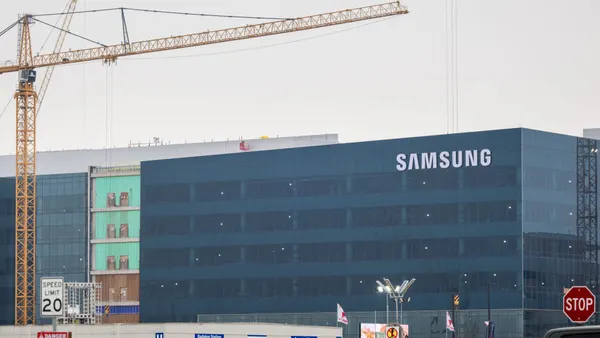The American manufacturing industry has gone through several distinct eras, and now knocks at the door of yet another. First there was a boom of domestic manufacturing, where most products used by Americans were made in America. This was followed by a long transition into an offshored global supply chain, where more and more component parts and complete goods were imported from other countries, taking advantage of lower labor costs. And now, as widespread new tariffs lower the profitability of importing, we enter into a third era.
It’d be too simple to say this is just a return to the first era, that the result will be total re-shoring of production to America. Even with additional costs, sometimes foreign production will still be cheaper or otherwise necessary. Likewise, it’s actually too simple to say this is entirely because of tariffs. Tariffs are just the latest and most relevant in a long line of disruptions to the global supply chain: COVID, material shortages, shipping issues, geopolitical conflicts, and more.
Instead, this era will be defined by not having any singular strategy that defines it. There will be re-shoring and offshoring. There will be more selling to domestic audiences, but new global markets will open up. Technological innovation will continue to grow at a breakneck pace, with categories of products that we can’t yet imagine becoming pillars of the economy: robotics, 3D-printed consumer goods, maybe even flying cars! There will be crises demanding rapid readjustment, but in each crisis, the opportunity to do something that’s never been done before.
So what do you do? The first step is not seeing this complex, turbulent era as a negative, as just a storm to be weathered. That “let’s batten down the hatches and try to ride this out” attitude is going to leave you out-competed and without a seat at the table. Instead, see this as the adjustment period to a new world of manufacturing, a new world that actually represents the global demand for manufactured products. We talk about unleashing the potential of manufacturing because we feel we’re still just scratching the surface of the manufactured world. All of these disruptions and flux points are your opportunity to seize a slice of that new, massive, pie.
Okay, so how do you do that? It comes down to three main pillars: being knowledgeable, being agile, and being flexible. You need to be knowledgeable enough to keep up with the risks and opportunities hidden in the news every day. The more sources of information you can absorb and understand in the context of your business, the more you can hone in on the right gameplan. You should be able to access your own systems’ data and consistently simulate any potential cost change, delay, or other disruption.
Next is agility. Once you’ve seen the effects that disruptions could have, you need to be able to switch to an alternative, fast. You won’t ever be the only one trying to sell to a new market, or introduce a new technology, or switch away from a costly supplier. But you can be the one who does it first. The first mover advantage in these situations is huge.
Finally is flexibility. When you’ve chosen to adopt a new strategy, or when disruptions force a new strategy on you, you don’t want it to come at a major cost. You don’t want to be stuck with a warehouse full of products you’ve realized aren’t profitable to sell. Some loss is inevitable, but focusing on maintaining a week-by-week, or even day-to-day gameplan instead of committing for months or years will help you from getting stuck on the wrong path.
This all sounds great, but is this advice sufficient? After all, the speed of a manufacturing shop is the speed of your production line, which is highly optimized, right? The flexibility of a manufacturing shop is dictated by economies of scale, by minimum order sizes and production runs, right? And knowledge? Yeah, you can spend all day digging through spreadsheets and purchase orders and filing cabinets, but is that really a better use of your time than just doing something?
The answer is to not optimize production itself, but back office processes. And that’s where CADDi comes in. Our platform revolutionizes how you access and use manufacturing data, making you perfectly knowledgeable about all your options, up to 80% faster in your workflows, and dynamic enough to not overcommit.











